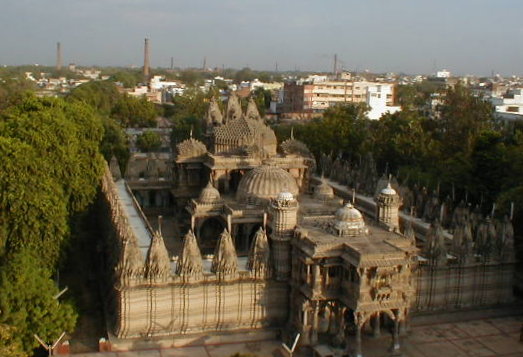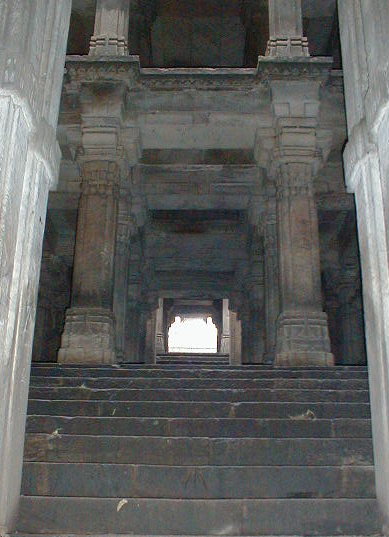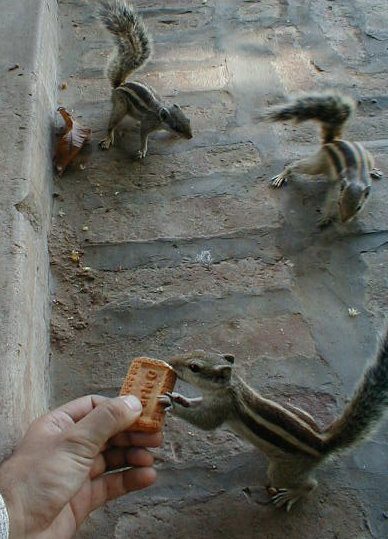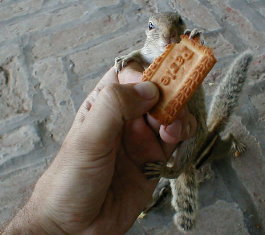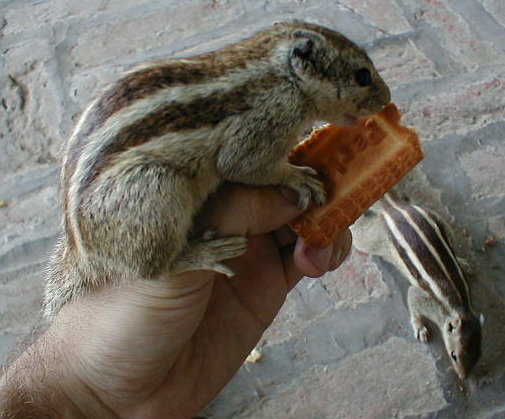|
We 'did' Ahmdebad today. We visisted Temples, Mosques, a step well, a textile museum, Gandhi's Ashram and I went to a party in the evening. We start and end with temples. I visisted Dipak's local Jain temple yesterday morning when I arrived. We visited a larger Jain temple (Sheth Hathisinh) in town today. This is the largest Jain temple among the 400 Jain temples in Ahedabad. It was construted in only two years, around 160 years ago by employing thousands of skilled workmen. Interestingly, the workers were not Jain, but followers of Hinduism, so the architect allowed them to construct a small Hindu temple on the same site so that that they would be able to worship at work, rather than travelling home.
We ate lunch at the temple. Jain's have a relatively strict diet. In addition to being vegetarian (which in India includes no eggs), they also mustn't eat any root vegetables (including potatoes, carrots etc.), they should drink boiled and filtered water, and should avoid eating if possible after night-fall. We also visisted an extremely colourful Hindu temple which had some beautiful painted carvings. It was the first time that I had seen this sort of work, previously, all the carvings (mainly on Havelis) that I have seen was unpainted. The colours were typically Indian in style i.e. very much there! Diapk also took me to the Raj Babri mosque with its 'shaking' minarets. When one of the minarets is shaken, the other vibrates in sympathy. One of the minarets was taken apart by an inquisative Englishman, determined to find out how it worked, but he was unsuccesfull. Unfortunately, they are about half the height that they were due to Earthquake damage. Step wells were created in order to provide weary travellers with a cool place to rest and water their animals. They are unique to Northern India. They are constructed as a series of levels down to a well at the bottom. The construction allows animals to be led down to the water. As they are covered, they are cool at the bottom despite the intense sunlight. Unfortunately, most of them are dry due to the extensive industrial use of water in the town that has significantly lowered the water table.
We visited the Calico museum which has an extremely impressive collection of antique textiles. They show many different styles of weaving and dying. There were examples where weaving was done with threads pre-dyed to specific lengths before being carefully aligned and the material created. Tie-dying, silk and cotton mix and other unique skills were on display but unfortunately, tey do not allow photographs to be taken. The museum also had a wonderful collection of miniture paintings. Gandhi set up Ashram's, communal living areas in Ahmdabad. His first is almost directly across the road from Dipak's house, but one of the most famous is in the middle of Ahmedabad. This is where he started on the 'salt march' which was a protest against the tax enforced by the British on the use of Salt. What do I take pictures of in this place of immense cultural significance? Squirrels (or they could be chip-monks, I'm not sure). Still, you've got to admit that whatever they are they are very cute!
|
| Created by Dan Leigh 14/10/01 |
